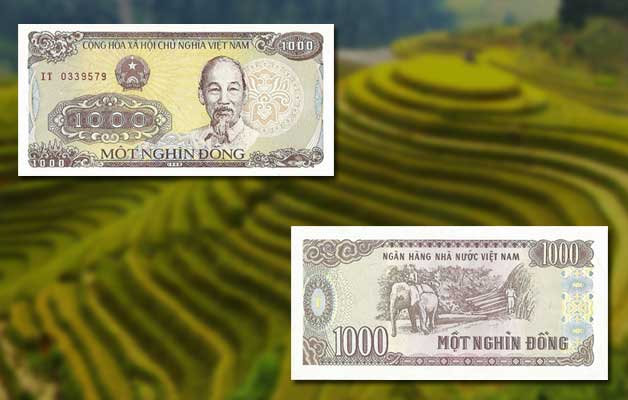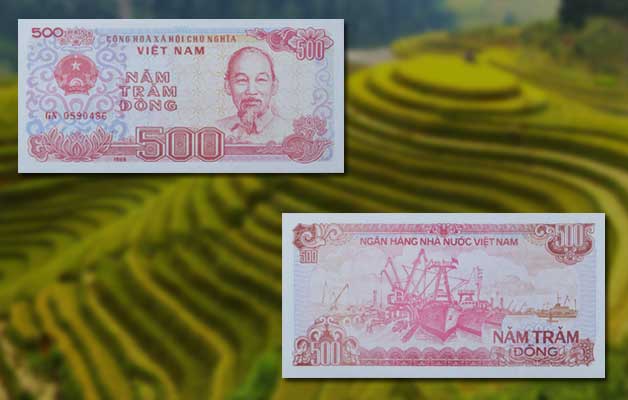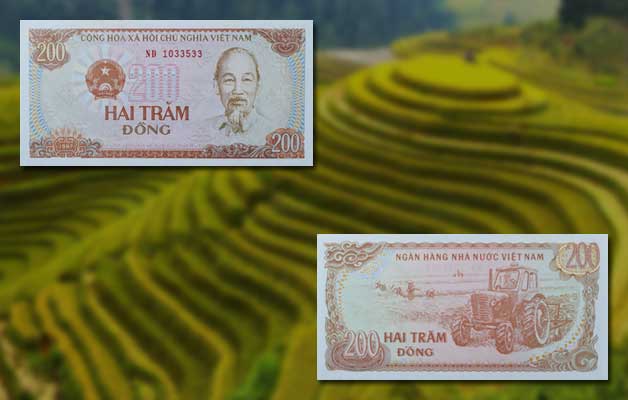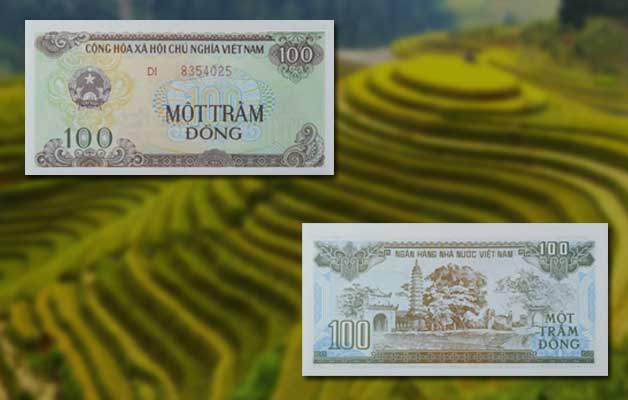Welcome to our series of “Banknotes of the Countries from across the world”. Though banknotes by their very definition are a type of a negotiable promissory note, made by a bank, payable to the bearer on demand, they are artistic treasures in their own right. All the countries are no doubt proud of their history and heritage and proudly boast about them on their currency notes. Currency notes and their designs and reason behind their issuance are in itself a topic of great interest and study. Hence we will discuss various such interesting and unique banknotes of the world.
In this part we are going to look at the banknotes of Vietnam. To read the first part of this series click here.
Vietnam is a Southeast Asian country on the South China Sea known for its beaches, rivers, Buddhist pagodas and bustling cities. Hanoi, the capital, pays homage to the nation’s iconic Communist-era leader, Ho Chi Minh, via a huge marble mausoleum. Ho Chi Minh City (formerly Saigon) has French colonial landmarks, plus Vietnamese War history museums and the Cu Chi tunnels, used by Viet Cong soldiers.
It is the world’s 15th-most-populous country, and the ninth-most-populous Asian country. Located on the eastern Indochina Peninsula, Vietnam has been for much of its history a predominantly agricultural civilization based on wet rice cultivation. The “Dong” has been the currency of Vietnam since May 3, 1978. Issued by the State Bank of Vietnam, it is represented by the symbol “₫”. Formerly, it was subdivided into 10 hào, which were further subdivided into 10 xu, neither of which are now used.
The term “Dong” originates from the Chinese word “Tong qian” which means “money” or refers to Chinese bronze coins used during the dynastic periods of China and Vietnam. Before the unification of Vietnam, both the North and the South regions had different currency systems. After Vietnam was reunified, the Dong was also unified, on May 3, 1978.
In 1978, aluminium coins (dated 1976), were introduced in denominations of 1, 2, and 5 hào and 1 Dong. n 1978, the State Bank of Vietnam (Ngân hàng Nhà nước Việt Nam) introduced notes in denominations of 5 hào, 1, 5, 10, 20, and 50 đồng dated 1976. Over the periods many circulative and commemorative coins and various series of banknotes have been issued by the country. Today we are discussing a few Vietnamese Dong banknotes issued in various years. The note specifications are as follows:
Denomination: 1000 Dong
Year of Issue: 1988
Obverse: Portrait of Ho Chi Minh (1890-1969), a Vietnamese Communist revolutionary leader who was Chairman and First Secretary of the Workers’ Party of Vietnam, to right. Vietnamese emblem (Coat of Arms) is seen with denominational value in words and serial number in left centre. Year of issue is in bottom with the country name “Cong Hoa Xa Hoi Chu Nghia Viet Nam” (Socialist Republic of Vietnam) at top. This brown and green banknote has floral design in background.
Reverse: Depicting the Forestry productions on the reverse, the note showcases Teak logging with elephants. Traditional floral decoration is seen at corners with denominational values in numbers and words with issuing bank name “Ngân Hàng Nhà Nuoc Viet Nam” (The State Bank of Vietnam) at top. Watermark: Lotus flower. Predominant colour: Green brown.
Denomination: 500 Dong
Year of Issue: 1988
Obverse: Portrait of Ho Chi Minh (1890-1969), a Vietnamese Communist revolutionary leader who was Chairman and First Secretary of the Workers’ Party of Vietnam, to right. Vietnamese emblem (Coat of Arms) is seen to left with denominational value in words in left centre. Year of issue is in left bottom corner with the serial number above and country name “Cong Hoa Xa Hoi Chu Nghia Viet Nam” (Socialist Republic of Vietnam) at top. This brown and red banknote has floral design at corners.
Reverse: Hai Phong Port dockyard scene is depicted on the reverse. Traditional floral decoration is seen at corners with denominational values in numbers and words with issuing bank name “Ngân Hàng Nhà Nuoc Viet Nam” (The State Bank of Vietnam) at top. Watermark: Lotus flower. Predominant colour: Red brown.
Denomination: 200 Dong
Year of Issue: 1987
Obverse: Portrait of Ho Chi Minh (1890-1969), a Vietnamese Communist revolutionary leader who was Chairman and First Secretary of the Workers’ Party of Vietnam, to right. Vietnamese emblem (Coat of Arms) is seen to left with denominational value in numerals and words in left centre. Year of issue is in left bottom corner with the serial number and country name “Cong Hoa Xa Hoi Chu Nghia Viet Nam” (Socialist Republic of Vietnam) at top.
Reverse: Agricultural activities are depicted with farmers in the background of a tractor ploughing a field to right. Traditional floral decoration is seen at corners with denominational values in numbers and words with issuing bank name “Ngân Hàng Nhà Nuoc Viet Nam” (The State Bank of Vietnam) at top. Watermark: Lotus flower. Predominant colour: Red brown.
Denomination: 100 Dong
Year of Issue: 1991
Obverse: Vietnamese emblem (Coat of Arms) to left over a traditional floral and ornamental design. Denominational value in words “Mot Tram Dong” (One Hundred Dong) is in the centre over numerical value. Serial number and country name “Cong Hoa Xa Hoi Chu Nghia Viet Nam” (Socialist Republic of Vietnam) at top. Light brown on multicolour under print.
Reverse: Pho Minh Tower and Pho Minh Pagoda temple gateways in Tuc Mac village near Nam Dinh city. Lotus and oak ornamental designs are seen in corners. Watermark: Repetitive pattern of diamond rectangles in circles. Denomination value in words and numbers is in three corners with the issuing bank name “Ngân Hàng Nhà Nuoc Viet Nam” (The State Bank of Vietnam) at top.
Aren’t these notes a sight to look at! Collecting banknotes of the world have been a hobby probably since the inception of paper money. Hobbies help to gain knowledge. Notaphily is such a hobby that will give you knowledge of numerous countries and their currencies.
Indeed instead of just spending the money, just for once let’s appreciate the beauty of their designs. There are so many more such banknotes of the world and we are very excited to explore such wonderful artworks. Stay with us and let’s enjoy this together.
The post Banknotes of the World-II appeared first on Blog | Mintage World.




Comments
Post a Comment